There can be your advertisement
300x150
What Cookware Is Suitable for Glass-Ceramic Cooking Zones?
For their long-term and high-quality operation, it is important to choose the right glass-ceramic cookware. We will tell you about the rules for selection and features of stoves today.
What Are Glass-Ceramic Stoves?
As demand for glass-ceramic stoves increases, most manufacturers are adding these products to their range and offering them to consumers. Before choosing from the variety of available items, let's consider what ceramic stoves are and their main features.
This is a household appliance that is a variety of electric stoves. The smooth, flat surface distinguishes it from other types, and the panel is made of glass and ceramic, hence the name.
Usually, the material called "ceran" is used as the base of glass-ceramic stoves. It has increased strength and can withstand heavy items.
These types of stoves are more economical compared to other electric stoves.
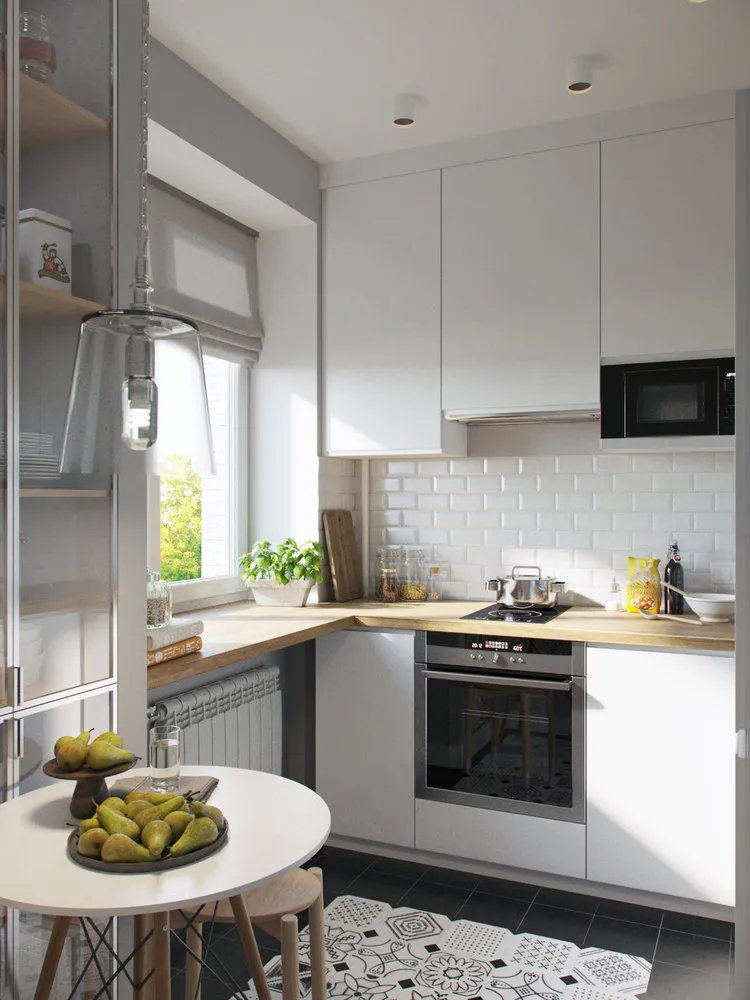 Design: Ksenia Drapey
Design: Ksenia DrapeyTypes of Glass-Ceramic Stoves
Before we find out what kitchenware is suitable for glass-ceramic stoves, it's important to understand the types of this equipment and how they are classified.
Here are 3 main factors for dividing these appliances:
placement in the kitchen;
number and types of burners;
functional features.
Certainly, depending on these factors, the choice of cookware for glass-ceramic surfaces is made.
 Design: Irina Krasheninnikova
Design: Irina KrasheninnikovaPlacement
Today, in the assortment of tech stores, you can find both standalone and built-in models. Standalone units are usually universal—they include both the cooking zone and the oven.
Built-in models are most popular in modern kitchens and interior design because they look more aesthetically pleasing. Built-in appliances also have their own classification: there are dependent and independent models. Dependent models must have an oven placed near the cooking zone, as their control panel is combined. Independent appliances can be located anywhere, even far from the oven—this choice is preferred by modern designers as it allows placing the oven at eye level rather than at the bottom, which was the traditional approach.
 Apartment in Stockholm
Apartment in StockholmBurners
Different types of burners are distinguished: rapid, halogen, ribbon heating elements (also known as Hi-Light), and induction.
Regardless of the type of burners on glass-ceramic stoves, they all heat up and cool down faster than on regular stoves, and it is much easier to control them. The speed of heating and cooling also affects the choice of pots and pans for glass-ceramic stoves—important is that the bottom of the pot covers the entire surface of the burner. Today, manufacturers of household appliances offer models with different-shaped burners that can expand or contract depending on the mode.
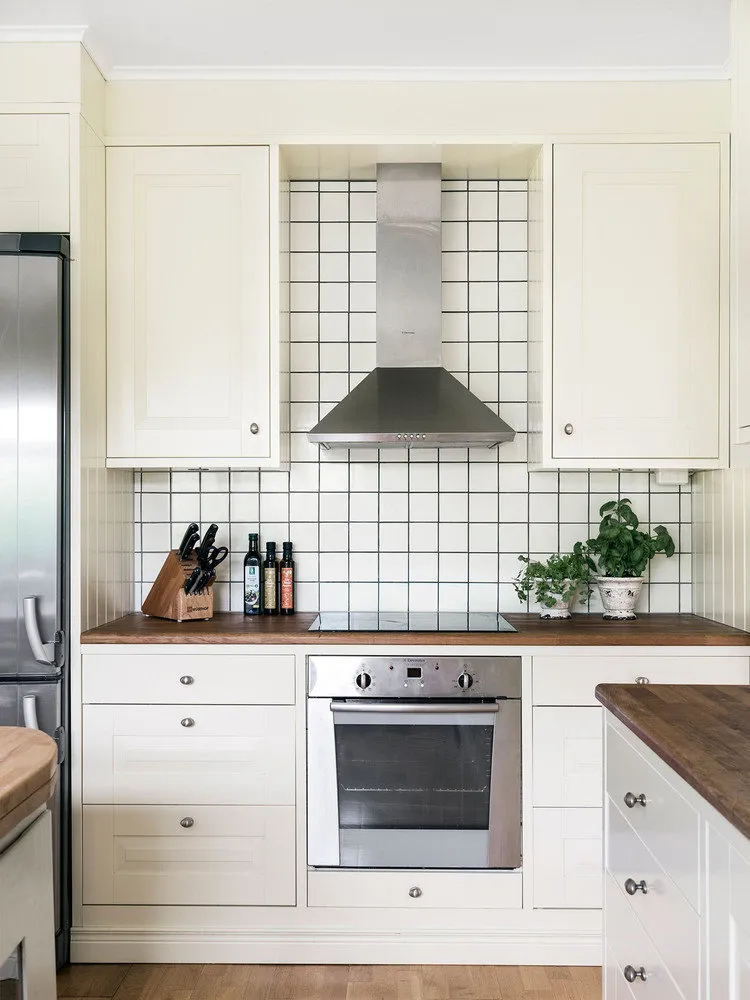 Design: Ulrike Vilborg and Swedish Consultant Working Under Catherine Ireland's Supervision
Design: Ulrike Vilborg and Swedish Consultant Working Under Catherine Ireland's SupervisionFunctional Features
There is a variety of useful features that distinguish glass-ceramic stoves. Let's list some popular useful features, which will also help determine what type of kitchenware you need for a glass-ceramic stove.
Stove Detection Feature. This feature helps avoid turning on the appliance if a pot or pan is not placed on the burner or its bottom does not match the size of the burner.
The system, which many manufacturers call "Auto-Focus," allows recognizing the type of pot and automatically connects either a large or small heating surface of the burner.
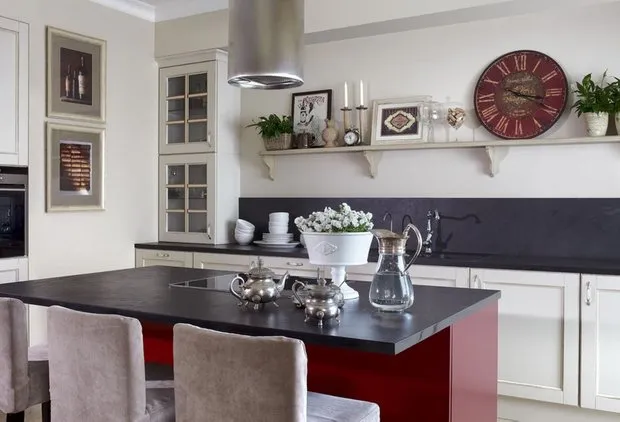
Auto-Shutoff Feature. This feature allows setting a timer to turn off one or several burners, and some models have timers on all burners, while others only on one or two.
Thawing Feature, "Cleaning" Pause, Temporary Heating Stop, Automatic Boiling—these features can be useful in a modern kitchen, although they do not affect how to choose the right cookware for cooking.
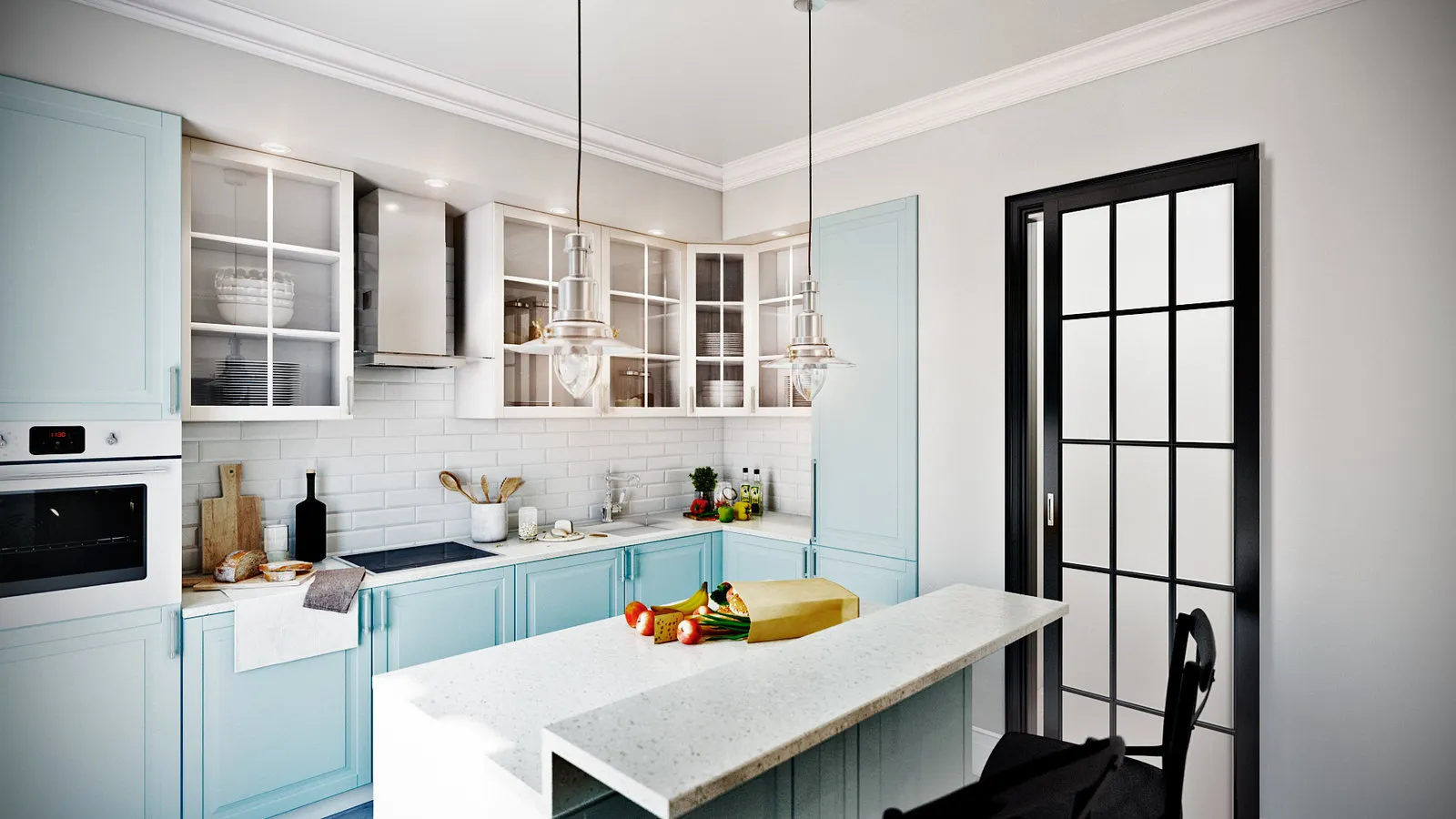 Design: CO:interior
Design: CO:interiorFeatures of Cookware Heating
The heating principle of glass-ceramic stoves is similar to that of regular electric stoves with cast iron "pancakes." The element responsible for heating gradually heats up and transfers heat in the required direction to the cookware. Depending on the type of stove, it also cools down (fast or not).
Modern stoves with instant and even heating of the cookware allow preparing food quickly, easily, and deliciously.
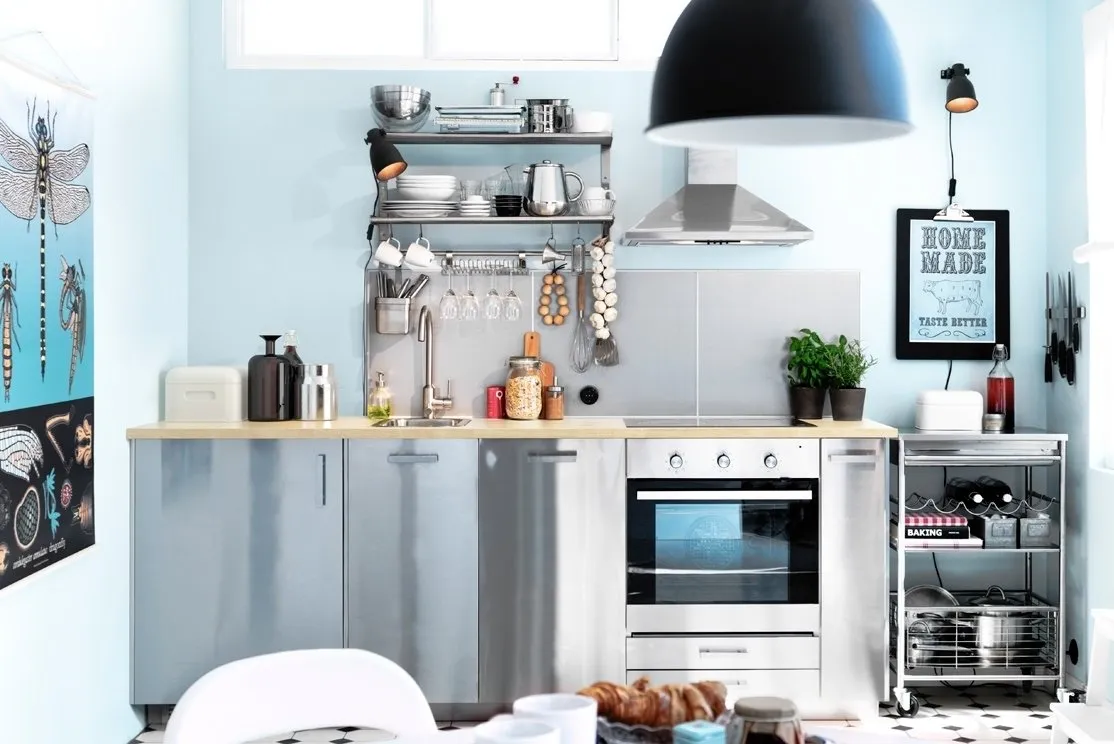
Compatibility Issues with Cookware
Owners of electric stoves need to know what cookware is suitable for glass-ceramic stoves, as improper selection can damage the surface and reduce the stove's performance. Also, incorrect cookware choice will not allow you to fully use all the advantages of glass-ceramic stoves, and it won't provide fast and even heating. There should be no problems in choosing the right glass-ceramic cookware, as modern stores offer a wide variety of options.
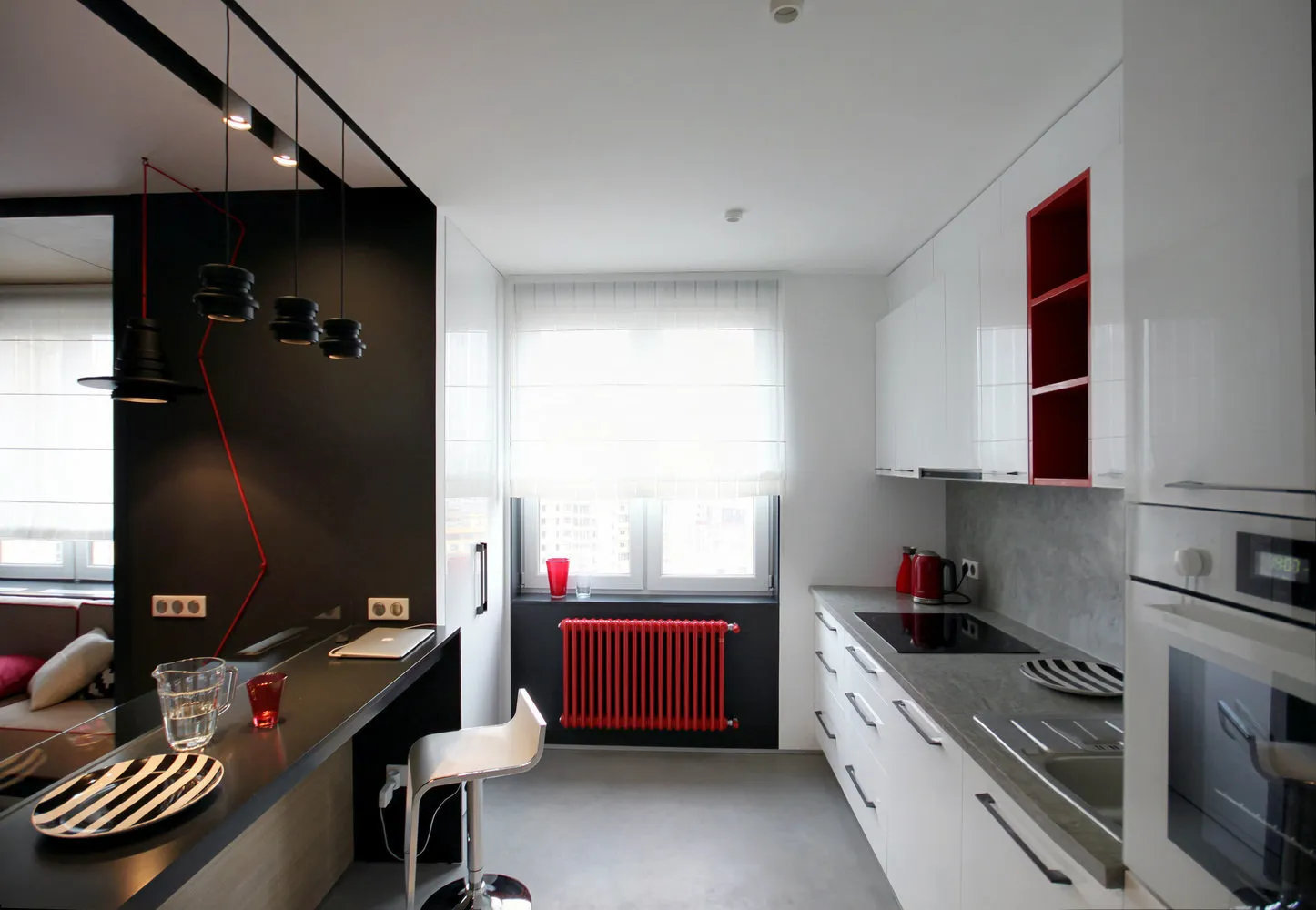 Design: Denis Svirid, Nika Voryntseva
Design: Denis Svirid, Nika VoryntsevaCharacteristics of the Ideal Bottom for Glass-Ceramic Stove Cookware
Perfect glass-ceramic cookware is made with a thick bottom from stainless steel. A flat and smooth bottom is the main criterion, ensuring minimal heat loss during rapid heating. It is also important that the bottom's diameter corresponds to the burner size.
It is advisable to choose a bottom with maximum reflection effect, usually matte or dark-colored, and avoid images or engravings on the bottom, as these may interfere with effective operation.
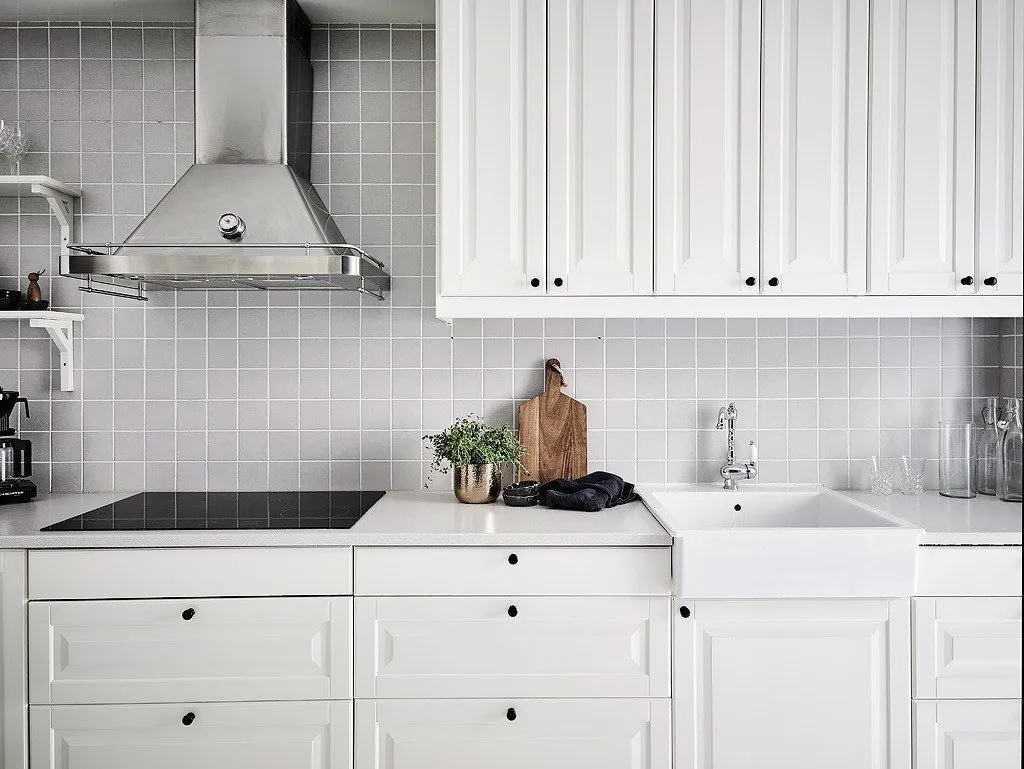 Design: Anna Furbacken
Design: Anna FurbackenWhat to Avoid Using
It is absolutely not recommended to use old cookware. Even if it appears flat, it is not worth the risk, as old cookware with soot and irregularities can damage the glass-ceramic surface.
It is not suitable for copper or aluminum cookware. When heated, such metals can leave marks on the surface that are very difficult to remove.
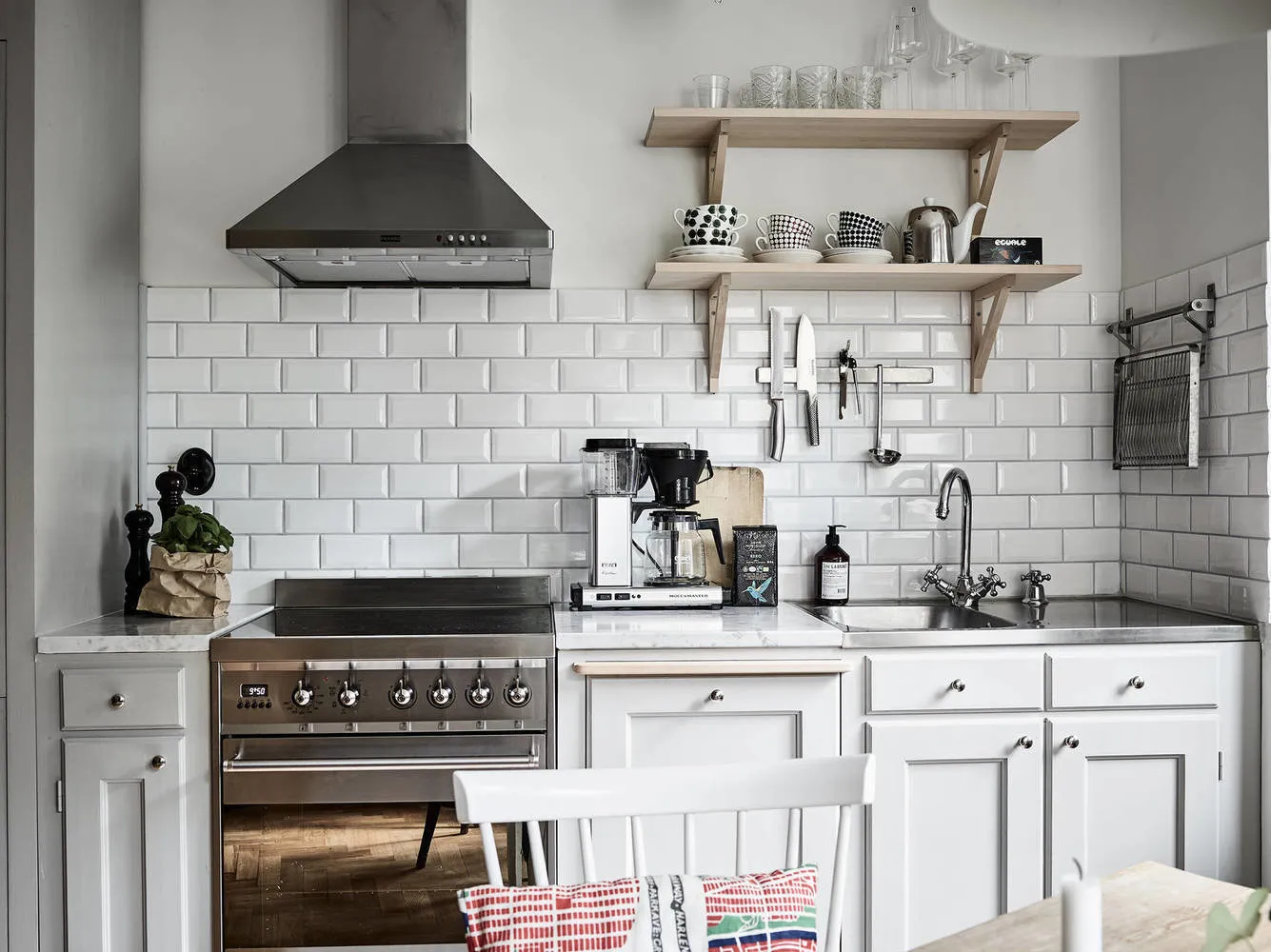 Design: Stadshem Bureau
Design: Stadshem BureauHow to Choose Cookware for Glass-Ceramic Stoves: Characteristics
Cookware for glass-ceramic stoves requires careful selection. First, it is important to study the instructions in household appliances. The manufacturer must indicate diagrams of proper and improper placement of cookware. It was already mentioned above that the size should correspond to the burner.
Material
You can choose the following types of material.
- Stainless Steel. This is generally the best option, as pots and pans of this type are usually easy to clean, conduct heat well, and look very elegant. It is better to pay attention to the instructions on the packaging of cookware, which should indicate that it can be used on glass-ceramic surfaces.
 Design: Evgenia Matveyenko, FlatsDesign Architectural Bureau
Design: Evgenia Matveyenko, FlatsDesign Architectural Bureau- Enamel Steel. With the caveat that it must have a perfectly flat bottom, without scratches, bulges, or chips. Enamel cookware is often produced in various colors with patterns, so some housewives enjoy choosing such pots.
- Glass, only heat-resistant. A pot made of this material looks very beautiful but has relatively low thermal conductivity and heats up more slowly—so be prepared for increased electricity consumption.
- Aluminum items are acceptable, but with ceramic or Teflon bottom. Special symbols on the packaging will indicate which items are suitable for glass-ceramic stoves.
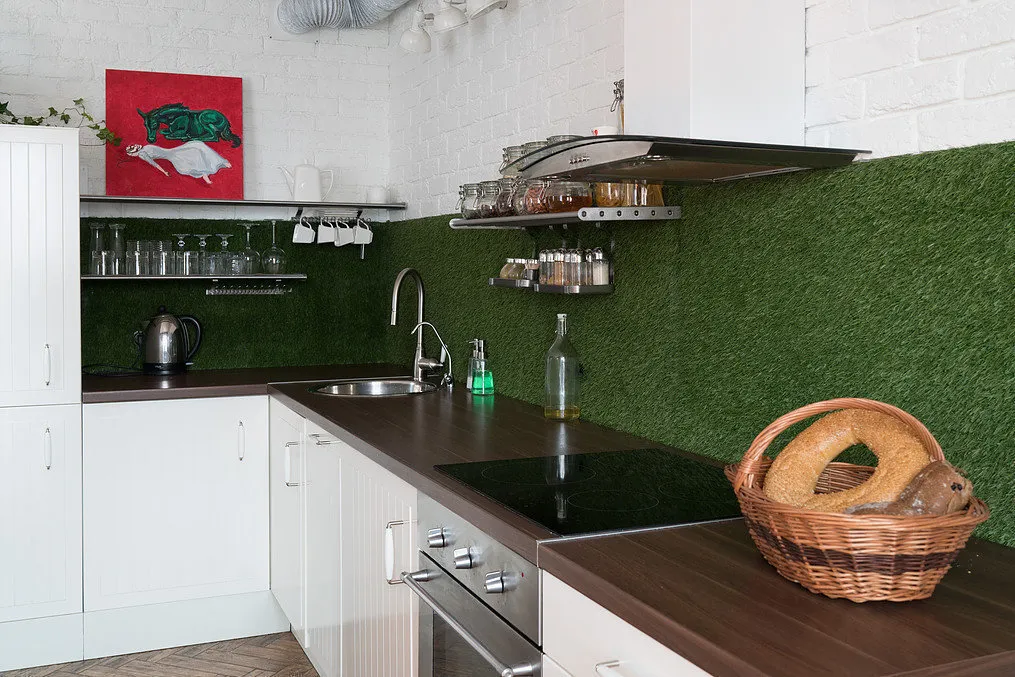 Design: Marina Syrko
Design: Marina SyrkoBottom
Cookware suitable for glass-ceramic stoves should have a thick, flat bottom. Usually, in cold conditions, it is concave, but when heated, it straightens out and fits tightly to the burner. Bottoms with chips, soot, or other irregularities will almost certainly damage the glass-ceramic surface. Also, do not use pots or pans that were previously used on gas stoves. Their bottoms are already deformed, as the flame on gas stoves is not distributed evenly.
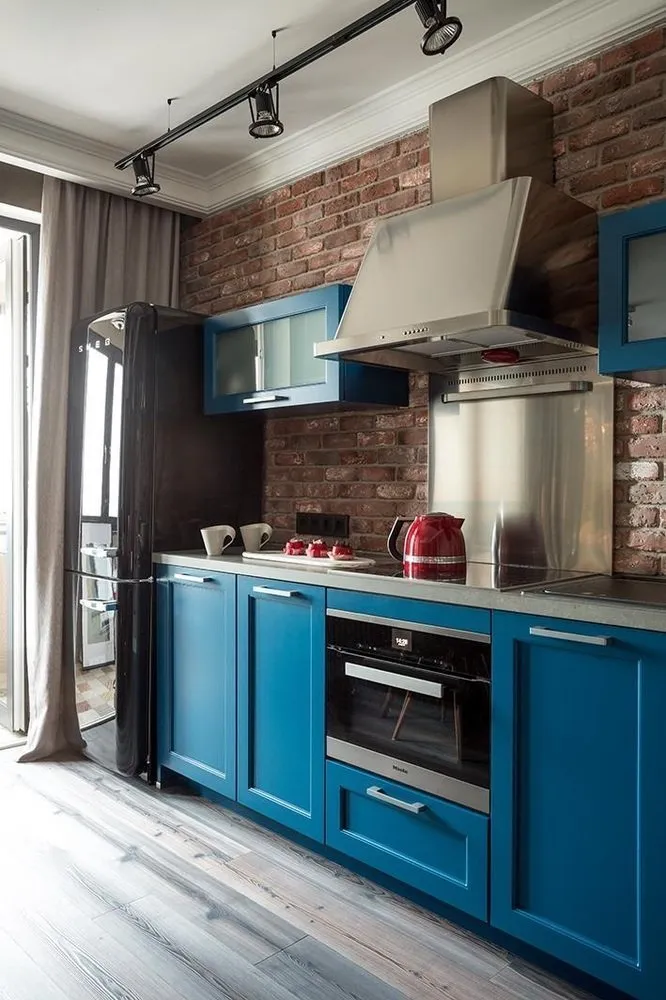 Design: Zhenya Zhdanova
Design: Zhenya ZhdanovaVolume
If the stove has burners of different sizes, or several burners regulate the heating radius using a special mode, you can choose cookware of varying volume. Matching the volume of the pot to the burner size will help avoid extra electricity consumption and keep the cookware in good condition for a long time.
 Design: Marianne Ewenne
Design: Marianne EwenneWall Thickness
Just as with the bottom, thicker walls will only be better, especially if the stove heats up quickly. In such cookware, heat will last longer and dishes will taste much better.
Lid
Lids for pots and pans, as a rule, come in the set. There are no special requirements for this item, as it does not come into direct contact with the glass-ceramic surface. It is better to choose lids by size, as this will make cooking more comfortable and convenient.
How to Use Cookware for Glass-Ceramic Stoves
What cookware is suitable for glass-ceramic stoves? This is kitchenware with a flat, thick bottom that is resistant to deformation (the thickness should be more than 7 mm), thick walls (more than 0.5 mm), and good thermal conductivity. The last characteristic means that the bottom of the vessel should not be shiny but dark and matte.
It is important to know what cookware should not be used:
with a rough, uneven bottom;
with a convex surface;
without special coating, aluminum cookware;
pots, pans, and kettles with a diameter smaller or larger than the size of the glass-ceramic burner. If the diameter is too small, heating will be slow. If it is too large, overheating will occur, which may damage the equipment.

When the vessel for glass-ceramic stoves is selected, it should be used correctly:
Place only on the cooking zone with a dry, clean bottom.
Old pots and pans from gas or regular electric ovens are not suitable for cooking.
Avoid spilling the contents of pots onto the burner surface and burning.
After finishing cooking, the stove should cool down. Then its surface should be wiped slightly with a damp sponge soaked in a special solution for cleaning glass-ceramic surfaces. In this way, the original appearance of the glass-ceramic surface can be preserved and its service life extended.
Photo Gallery





 Design: Marianne Ewenne
Design: Marianne Ewenne





























 Design: Flatforfox Studio
Design: Flatforfox StudioProperly Selected Cookware for Glass-Ceramic Stoves Will Keep Expensive Equipment in Perfect Condition for Years.
Video
The cover design project by Arthur Minakov and Julia Fedotova.
More articles:
 Kitchen Layout in Old Five-Story Building: 3 Examples + Tips
Kitchen Layout in Old Five-Story Building: 3 Examples + Tips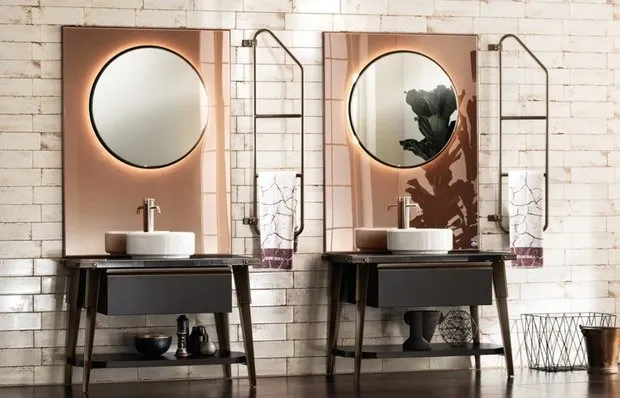 What Was Shown at Cersaie 2017: 10 Trends for the Bathroom
What Was Shown at Cersaie 2017: 10 Trends for the Bathroom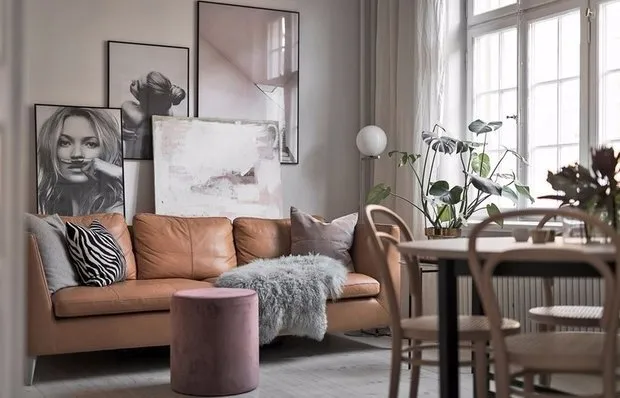 Studio Apartment in Sweden with Micro-Kitchen and Comfortable Bedroom
Studio Apartment in Sweden with Micro-Kitchen and Comfortable Bedroom 9 Things You Didn't Know About Microwave Ovens
9 Things You Didn't Know About Microwave Ovens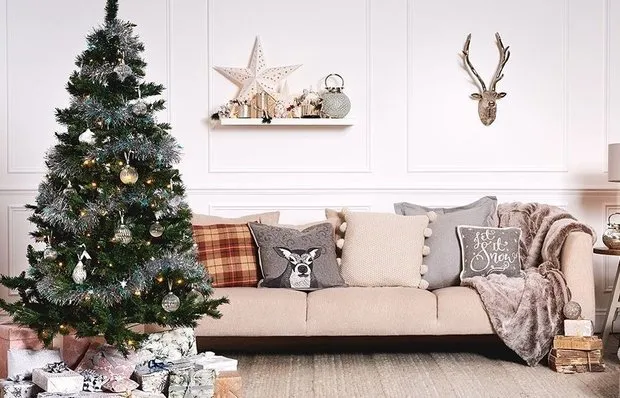 Checklist: What You Need to Do Before New Year
Checklist: What You Need to Do Before New Year Laska Family Bedroom Beds
Laska Family Bedroom Beds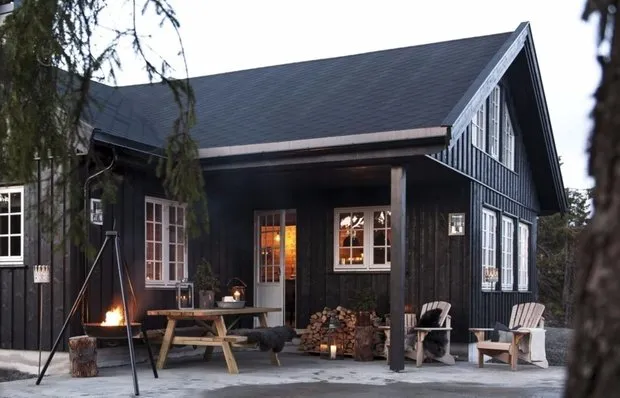 Cabin in Norway with Spacious Terrace
Cabin in Norway with Spacious Terrace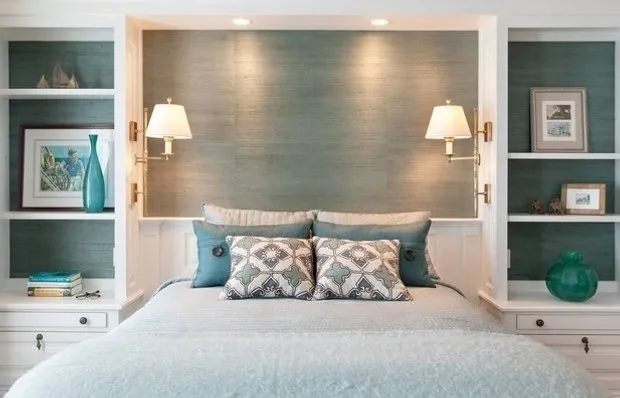 How Not to Decorate a Small Apartment: 10 Tips
How Not to Decorate a Small Apartment: 10 Tips